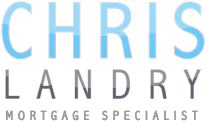 THE INS & OUTS OF MORTGAGES
THE INS & OUTS OF MORTGAGES

The basic features to consider when choosing a mortgage financing package include:
Conventional or High-Ratio
A conventional mortgage is a loan for no more than 80% of the appraised value or purchase price of the property, whichever is less. The remaining amount required for a purchase (20%) comes from your resources and is referred to as the down payment. If you have to borrow more than 80% of the money you need, you'll be applying for what is called a high-ratio mortgage.
How Does a High-Ratio Mortgage Work?
You must have at least a 5% down payment when you buy a home. Any purchase where the down payment is between 5% and 19.9% is considered a high-ratio mortgage, and the mortgage must be insured by the Canada Mortgage and Housing Corporation (CMHC) or GE Capital Mortgage Insurance Company (GEMICO). The insurer will charge a fee for this insurance. The amount of the fee will depend on the amount you are borrowing and the percentage of your own down payment. Typical fees range from 1.00% to 2.75% of the principal amount of your mortgage. This amount can be paid up front or added to the principal portion of your mortgage. An Independent Mortgage Consultant can help you determine the exact amount.
Fixed Rate or Variable Rate
When you take out a fixed-rate mortgage, your interest rate will not change throughout the entire term of your mortgage. As a result, you'll always know exactly how much your payments will be and how much of your mortgage will be paid off at the end of your term.
With a variable-rate mortgage, your rate will be set in relation to Bank Prime¹ at the beginning of each month. In other words, it may vary from month to month. Historically, variable-rate mortgages have tended to cost less than fixed-rate mortgages when interest rates are fairly stable.
When rates change, your payment amount remains the same. However, the amount that is applied toward interest and principal will change. If interest rates drop, more of your mortgage payment is applied to the principal balance owing. This can help you pay off your mortgage faster.
Short Term or Long Term
The term is the length of the current mortgage agreement. A mortgage typically has a term of six months to 10 years. Usually, the shorter the term, the lower the interest rate.
A short-term mortgage is usually for two years or less. A long-term mortgage is generally for three years or more. Short-term mortgages are appropriate for buyers who believe interest rates will drop at renewal time. Long-term mortgages are suitable when current rates are reasonable and borrowers want the security of budgeting for the future. The key to choosing between short and long terms is to feel comfortable with your mortgage payments. After a term expires, the balance of the principal owing on the mortgage can be repaid, or a new mortgage agreement can be established at the then-current interest rates.
Open or Closed
Open mortgages can be paid off at any time without penalty and are usually negotiated for very short terms.² They are suited to homeowners who are planning to sell in the near future or those who want the flexibility to make large, lump-sum payments before maturity.
Closed mortgages are commitments for specific terms. If you want to pay off the mortgage balance, you will need to wait until the maturity date or pay a penalty.
Short Term or Long Term
The term is the length of the current mortgage agreement. A mortgage typically has a term of six months to 10 years. Usually, the shorter the term, the lower the interest rate.
A short-term mortgage is usually for two years or less. A long-term mortgage is generally for three years or more. Short-term mortgages are appropriate for buyers who believe interest rates will drop at renewal time. Long-term mortgages are suitable when current rates are reasonable and borrowers want the security of budgeting for the future. The key to choosing between short and long terms is to feel comfortable with your mortgage payments. After a term expires, the balance of the principal owing on the mortgage can be repaid, or a new mortgage agreement can be established at the then-current interest rates.
¹ Rate fluctuates and may differ temporarily from Bank Prime until adjusted monthly to reflect the latest change in Bank Prime.
² Some conditions apply.
 NEED HELP FINDING A MORTGAGE?
NEED HELP FINDING A MORTGAGE?



